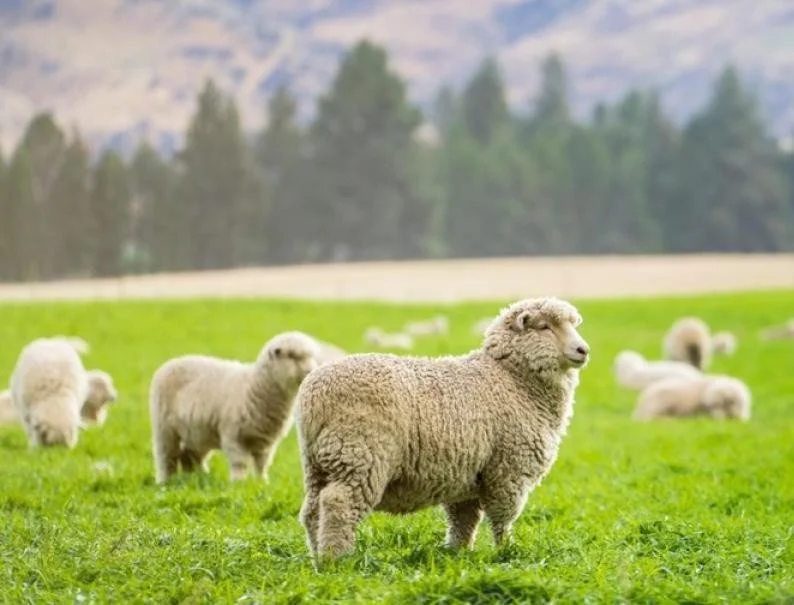Getting Smart with Nitrogen this Spring
Spring on New Zealand’s hill country farms is always a balancing act. It is the time of year when demand for feed surges, with lambing and calving in full swing, yet grass growth struggles to keep pace under cool soil temperatures.
For contractors and farmers alike, the weeks before and after lambing are decisive. Get the timing and management right, and stock hit the ground running with a good supply of quality feed. Get it wrong, and the season begins with hungry mouths and pressure that is difficult to recover from. Within this context, nitrogen fertiliser becomes a tool that can tip the balance, lifting pasture growth just when it matters most.
The science is simple enough. Cold soils in late winter slow the mineralisation of nitrogen from organic matter, meaning grasses lack the nutrient they need for strong growth. Legumes such as clover are also sluggish at this time of year, leaving animals short of the lush feed they require.
Applying nitrogen strategically in late winter or very early spring can give pastures the kick they need, closing the gap between feed demand and supply. For contractors, this is one of the busiest and most valuable services they provide. The spread of nitrogen, by air or ground, is directly tied to lamb survival, milk production and farm profitability.
Placement makes a difference. Not all paddocks respond equally to nitrogen, and hill country is especially variable. On shady southern slopes and easy ground, clover often thrives and naturally feeds nitrogen into the soil. But on steep, north-facing slopes, legumes are limited by dryness and shallow soils. Here, nitrogen applications can show the most dramatic response. Contractors with aerial capability can differentially apply fertiliser to these blocks, ensuring money is spent where it makes the most impact. It is a shift away from blanket spreading and towards precision, something increasingly valued as fertiliser prices and environmental scrutiny rise.
Timing is everything. The advice is to apply nitrogen four to six weeks before lambing or calving, particularly on north-facing country that warms more quickly. This ensures feed is available at the point when ewes and cows are at peak demand. A response of extra green feed at this stage can be the difference between smooth lambing and stock under stress. In practical terms, that means heavier lambs at weaning and healthier cows in milk. For farmers, it translates into productivity gains that pay back the cost of fertiliser several times over.
The rate of application is also well established. The sweet spot is between 30 and 50 kilograms of nitrogen per hectare at one time, roughly 65 to 110 kilograms of urea. Beyond this, the response tapers off, and the economics become questionable. Contractors often find themselves advising farmers on this point, drawing on experience as well as research. With global fertiliser markets still volatile, and prices in recent years at record highs, the value of every kilogram matters. Strategic application means not just spreading fertiliser, but doing so in a way that maximises return.
Product choice plays its part too. Standard urea remains common, but its weakness is volatility when rainfall is not guaranteed. In these situations, stabilised products such as Sustain or N-Protect can make a difference, holding nitrogen in the soil until rain arrives. They cost more, but they reduce the risk of losses to the atmosphere.
In ryegrass-dominant pastures, sulphate-sulphur can add another edge to efficiency, particularly in early spring. For colder soils lacking phosphorus, blends such as di-ammonium phosphate deliver a more balanced response. These are details contractors understand well, and their ability to offer tailored advice is increasingly part of the service.
Environmental pressure cannot be ignored, and spring only sharpens the debate. Nitrogen leaching and greenhouse gas emissions are high on the political agenda, and farmers are being asked to demonstrate responsible use. Blanket spreading across hill blocks without thought to slope, soil type or timing is difficult to defend. But targeted applications, aligned to animal demand and pasture response, carry a logic that both science and policy recognise.
Contractors equipped with GPS guidance and the ability to vary application rates across terrain are helping deliver that precision, and in doing so, they are strengthening the sector’s licence to operate.
Pasture cover adds another layer. Nitrogen applied to bare or overgrazed paddocks is far less effective than when applied to areas with at least 1,200 kilograms of dry matter per hectare. This makes grazing management inseparable from fertiliser management. For contractors, it reinforces the importance of observation. Seeing pastures first-hand, whether from a cab or cockpit, allows them to provide feedback to farmers that sharpens decisions beyond the spreading run itself.
Spring is also when the stakes are highest financially. Lambing percentages, calf survival and milk yield all hinge on early feed. When nitrogen is used wisely, it is not just about growing extra grass; it is about underpinning the productivity of the entire farm system. For farmers, that means stronger stock performance and greater returns. For contractors, it means delivering a service that is directly tied to outcomes on farm, strengthening relationships and securing ongoing work.
There is no silver bullet in hill country farming. Weather will always turn against you, and variability across slopes will never allow for uniform responses. But nitrogen, used with judgement, remains one of the most effective tools available to bridge the gap between demand and supply. It is about timing, placement and rate, and about aligning applications with both the science of response and the realities of farming life.
This spring, as ewes and cows demand more than pastures can naturally provide, nitrogen offers a chance to stay ahead of the curve. Used strategically, it helps farms emerge from winter in stronger shape, animals well fed and businesses on firmer ground. For hill country farmers and the contractors who support them, that is what resilience looks like: not overuse, but smart, targeted decisions that keep the system moving forward.

